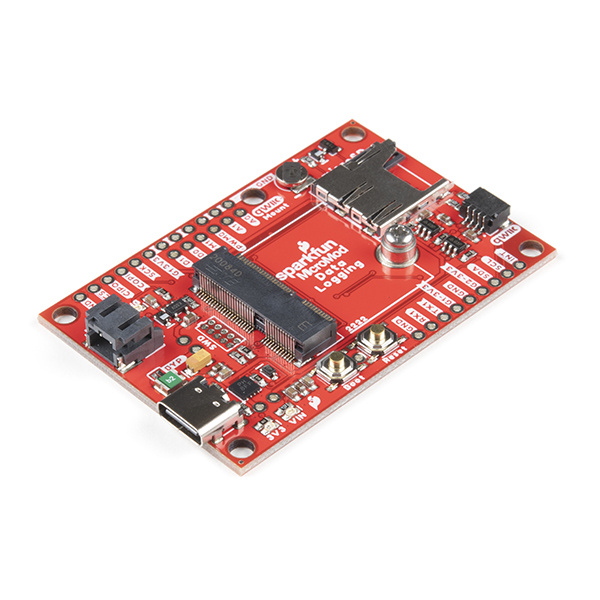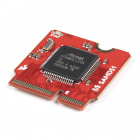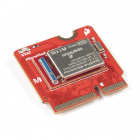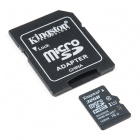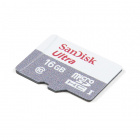MicroMod Data Logging Carrier Board Hookup Guide
Introduction
The MicroMod Data Logging Carrier Board is similar the SparkFun Logomatic to offer users a dedicated data logging board but adds the ability for you to pick a MicroMod Processor to customize it for your next data logger project. The Data Logging Carrier board was designed specifically for low power control and sensor data harvesting with the MicroMod ecosystem.
The Data Logging Carrier Board allows you to control power to both the Qwiic connector on the board as well as a dedicated power pin for non-Qwiic peripherals such as serial UART or SPI devices so you can pick and choose when to power the peripherals you are monitoring the data from. It also features a charging circuit for single-cell Lithium-ion batteries along with an RTC battery-backup circuit to maintain power for a real-time clock circuit on your Processor Board.
Required Materials
Like all of our MicroMod Carrier Boards, there is no processor included but instead you can plug in a Processor of your choice to the MicroMod M.2 connector on the carrier. Below are a few options to choose for your processor:
You'll also need a USB-C cable to connect the Carrier Board to your computer to program your Processor and for serial USB communication. If you want to add some Qwiic breakouts to your MicroMod project you'll want at least one Qwiic cable to connect it all together. Below are some options for both of those cables:
Qwiic Cable - 100mm
PRT-14427Along with a Processor, the pertinent cables and sensors or other items you intend to log the data from, you'll need a microSD card. Lastly, if you would like to have your MicroMod Data Logging project be battery powered, you'll want a single-cell Lithium-ion battery. Below are a few options for both of those accessories:
Lithium Ion Battery - 1Ah
PRT-13813microSD Card - 16GB (Class 10)
COM-15051Suggested Reading
The SparkFun MicroMod ecosystem is designed to allow users to customize their project to their needs. Do you want to send your logged data via a wireless signal (eg. Bluetooth or WiFi)? There's a MicroMod processor for that. Looking to instead maximize efficiency and processing power? You guessed it, there's a MicroMod processor for that. If you are not familiar with the SparkFun MicroMod system, take a look here:
If you aren't familiar with the MicroMod ecosystem, we recommend reading here for an overview:
 |
| MicroMod Ecosystem |
We also recommend reading through the following tutorials if you are not familiar with the concepts covered in them:
